Most cultivated vines belong to the European type (Vitis vinefera), the American bunch type (V. labrusca and its derivatives) or Muscadine type (V. rotundifolia). Grapes are adapted to a wide range of soils, except when poorly drained or when salt content is high. In general, light soils are preferred. High production can be obtained under rainfed conditions, but without summer rain a deep soil with a high water holding capacity is required. Under irrigation, grape can be grown success-fully on shallow soils of 0.6 m depth or less. On deep, fertile soil, the largest vines and high yields are produced. On soils of low fertility or limited depth, yields are usually lower, but fruit quality can be better.
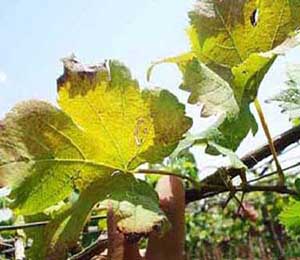
 Pigmentation seen in old leaves; leaf growth rate will be affected
Pigmentation seen in old leaves; leaf growth rate will be affected
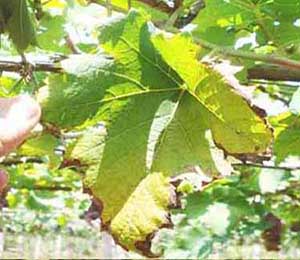
 A dull, dark green color will appear on the leaves.
A dull, dark green color will appear on the leaves.
 This symptom often has been characterized as black leaf of grapes Marginal chlorosis, browning, and drying may occur as the deficiency becomes more severe.
This symptom often has been characterized as black leaf of grapes Marginal chlorosis, browning, and drying may occur as the deficiency becomes more severe.
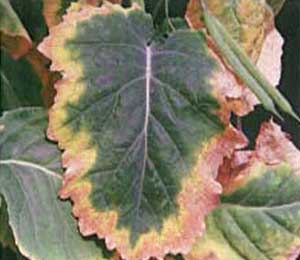
 Severe potassium deficiency greatly reduces vine vigor, berry size, and crop yield.
Severe potassium deficiency greatly reduces vine vigor, berry size, and crop yield.
 Symptoms of potassium deficiency generally develop in mid-shoot leaves followed by older basal leaves.
Symptoms of potassium deficiency generally develop in mid-shoot leaves followed by older basal leaves.
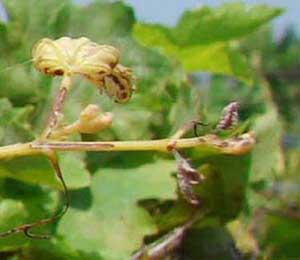
 Growth of the plant is reduced.
Growth of the plant is reduced.
 Symptoms are first seen at the growing points of the plant, which may become necrotic and die.
Symptoms are first seen at the growing points of the plant, which may become necrotic and die.
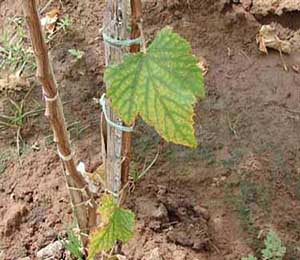
 Symptoms of Mg deficiency develop on the older leaves first.
Symptoms of Mg deficiency develop on the older leaves first.
 Chlorosis (yellowing) appears between the veins of the leaves while the veins remain green.
Chlorosis (yellowing) appears between the veins of the leaves while the veins remain green.
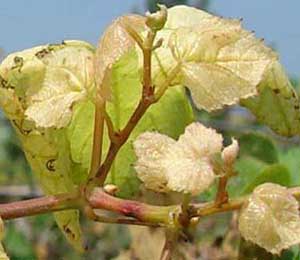
 Whole orchard or spot-wise stunted growth of pale-green plants.
Whole orchard or spot-wise stunted growth of pale-green plants.
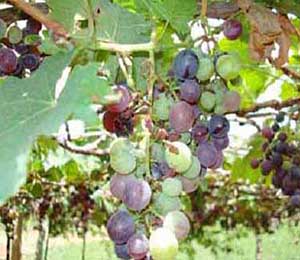
 Poor fruit set clusters will tend to be small, and berries will not fully develop on the rachis.
Poor fruit set clusters will tend to be small, and berries will not fully develop on the rachis.
 Terminal buds may not break in the spring, and ends of shoots sometimes are distorted.
Terminal buds may not break in the spring, and ends of shoots sometimes are distorted.
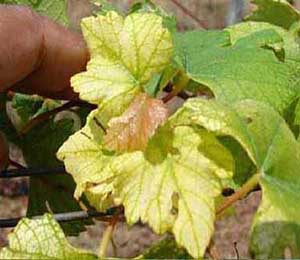
 Leaf veins remain green interveinal portion turns yellow young leaves small but not deformed.
Leaf veins remain green interveinal portion turns yellow young leaves small but not deformed.
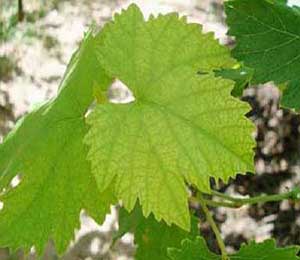
 Symptoms first appear as interveinal chlorosis, or yellowing of the younger terminal leaves.
Symptoms first appear as interveinal chlorosis, or yellowing of the younger terminal leaves.
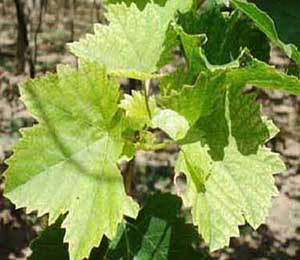
 Poor fruit set and stunted shots with small, misshapen leaves foliar application of zinc is the most effective method for treating Zn deficiency.
Poor fruit set and stunted shots with small, misshapen leaves foliar application of zinc is the most effective method for treating Zn deficiency.